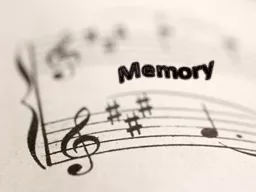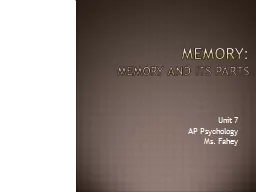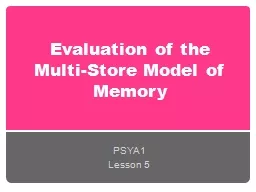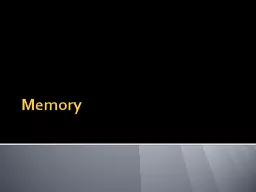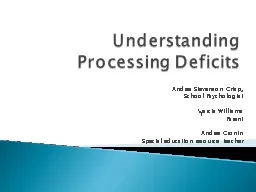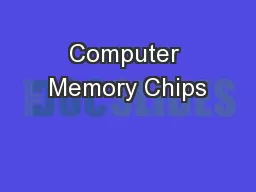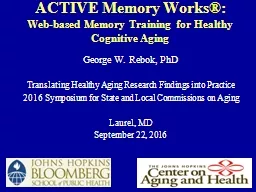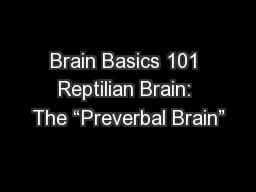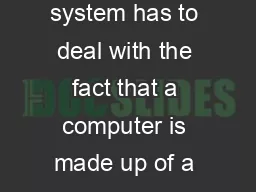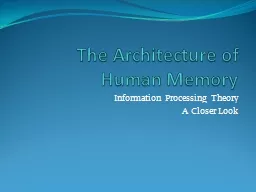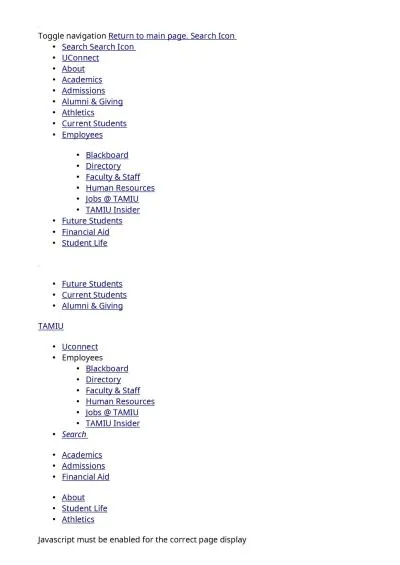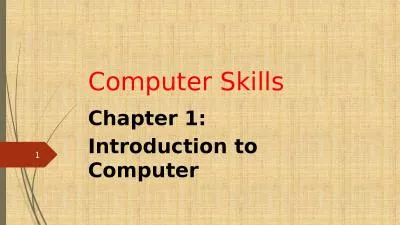PPT-Memory Information Processing Model: The Brain works like a computer.
Author : test | Published Date : 2018-10-12
Encodes Packages info Stores Safely keeps info for later use Retrieves Brings info back into the conscious mind Do you think that the brain works like a computer
Presentation Embed Code
Download Presentation
Download Presentation The PPT/PDF document "Memory Information Processing Model: The..." is the property of its rightful owner. Permission is granted to download and print the materials on this website for personal, non-commercial use only, and to display it on your personal computer provided you do not modify the materials and that you retain all copyright notices contained in the materials. By downloading content from our website, you accept the terms of this agreement.
Memory Information Processing Model: The Brain works like a computer.: Transcript
Download Rules Of Document
"Memory Information Processing Model: The Brain works like a computer."The content belongs to its owner. You may download and print it for personal use, without modification, and keep all copyright notices. By downloading, you agree to these terms.
Related Documents

